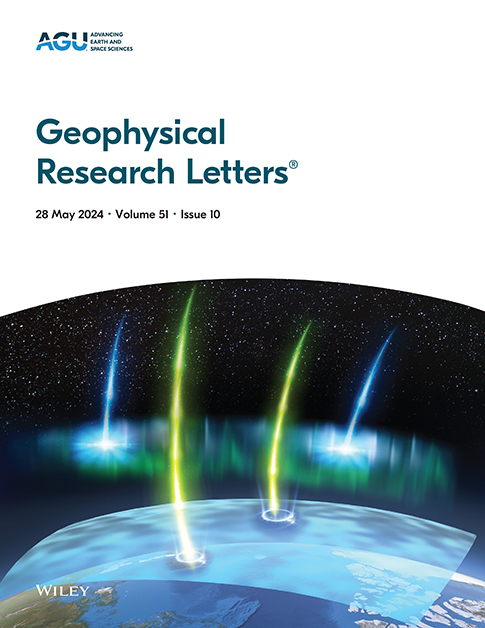北半球中高纬度地区降水制度对秋季物候的不同影响
IF 4.6
1区 地球科学
Q1 GEOSCIENCES, MULTIDISCIPLINARY
引用次数: 0
摘要
气候变化改变了降水制度,改变了植被生长季节的结束时间(end of the season [EOS]),对陆地碳和水循环产生了影响。然而,降水制度,即总降水量(Ptotal)和降水频率(Pfreq)对EOS的影响仍不清楚。利用1982年至2020年的卫星物候数据,研究了北半球中高纬度地区降水制度对EOS的影响。我们发现Ptotal的增加和Pfreq的降低都延迟了EOS, Pfreq降低的影响可能是通过更高的降水强度导致的最高温度升高和土壤湿度升高来介导的。我们进一步开发了一个基于过程的秋季物候模型,该模型纳入了Pfreq的影响,显著提高了模型的性能。这些发现强调了降水制度对EOS的影响,并强调了在预测未来气候情景下植被碳吸收时考虑降水频率和强度的必要性。本文章由计算机程序翻译,如有差异,请以英文原文为准。
Divergent Impacts of Precipitation Regimes on Autumn Phenology in the Northern Hemisphere Mid‐ to High‐Latitudes
Climate change has altered precipitation regimes and shifted the end of the vegetation growing season (end of the season [EOS]), with consequences for terrestrial carbon and water cycles. However, the impacts of precipitation regimes, that is, total precipitation (P total ) and precipitation frequency (P freq ), on EOS remain unclear. Using satellite‐derived phenology data from 1982 to 2020, we examined the effects of precipitation regimes on EOS across the mid‐ to high‐latitudes of the Northern Hemisphere. We found that both increased P total and decreased P freq delayed EOS, with the effect of reduced P freq likely mediated through increased maximum temperature and elevated soil moisture resulting from higher precipitation intensity. We further developed a process‐based autumn phenology model that incorporated the effect of P freq , which significantly improved model performance. These findings underscore the influence of precipitation regimes on EOS and highlight the need to account for both precipitation frequency and intensity when projecting vegetation carbon uptake under future climate scenarios.
求助全文
通过发布文献求助,成功后即可免费获取论文全文。
去求助
来源期刊

Geophysical Research Letters
地学-地球科学综合
CiteScore
9.00
自引率
9.60%
发文量
1588
审稿时长
2.2 months
期刊介绍:
Geophysical Research Letters (GRL) publishes high-impact, innovative, and timely research on major scientific advances in all the major geoscience disciplines. Papers are communications-length articles and should have broad and immediate implications in their discipline or across the geosciences. GRLmaintains the fastest turn-around of all high-impact publications in the geosciences and works closely with authors to ensure broad visibility of top papers.
 求助内容:
求助内容: 应助结果提醒方式:
应助结果提醒方式:


